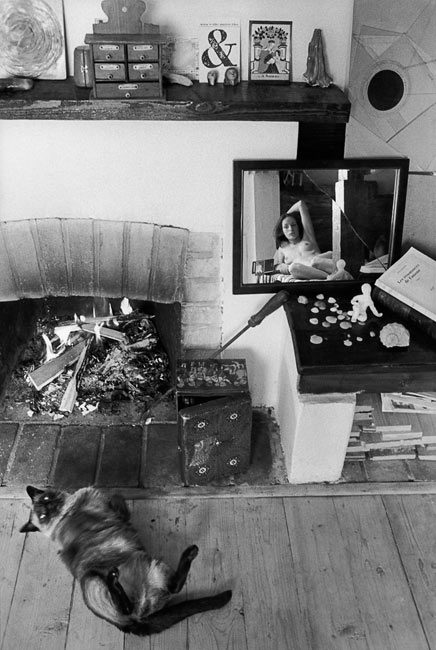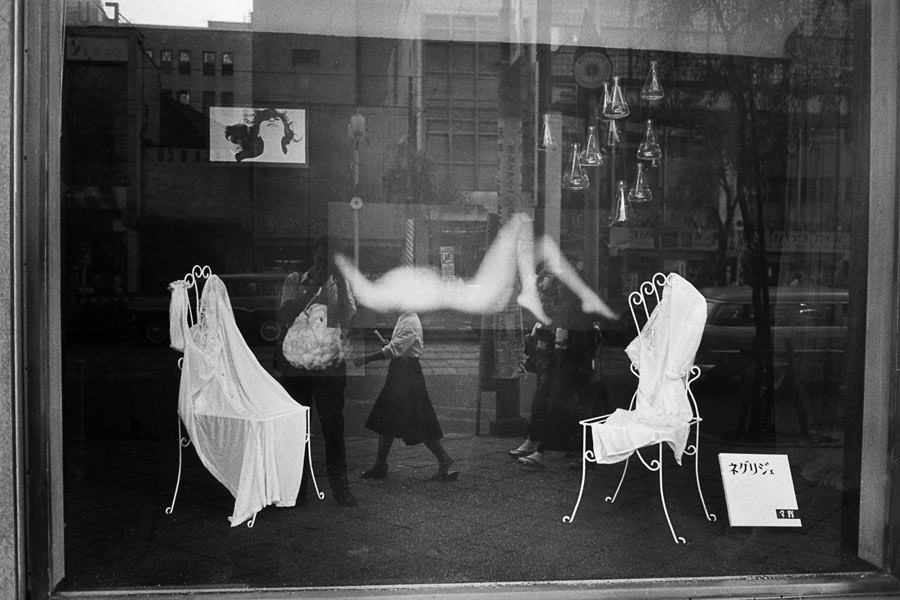Pause a pose
Marc Riboud is known for slipping in and out, slow and fast in a dance-like movement that separates him from the rough event; then silently pulling back the beaded curtain from the world and above all, from his world.
His natural shyness, hidden by a beautiful smile, allows him to glide along the edges of time, to seize the moment and, quietly leave so as not to get caught up in the demonstration. His spirit to travel has taken him all over the world, from country to country until coming full circle round.
His work has been described as reportage, but today when we read his photographs, we do so not through the subjects he has dealt with, but through the visual gestures he has captured, his pensive gaze delineates his critical sensibility.
There are two photographs that form a conversation of their own; their intimacy and murmurs enchant. Two nudes, suspended parenthesis in the beauty of their fixed time.
One in Japan, taken in 1958, shows a body stretched out on its back, knees bent in a fan shape, toes pointed downwards, an arm raised under the head that disappears into the shadows. The nude literally floats in the center of what seems to be a shop window. On closer inspection, what appears to be the frame of a painting is the window frame and we are standing where Marc stood. His reflection is subtly embedded in the heart of the image as his head takes its place in the arms of the nude. Behind the window are two white wrought iron chairs with radiant white negligees nonchalantly draped on them. They establish the second plane after the glass frame where the reflections of the street reverberate. Then comes the suspended nude in the third plane. In the background, blending into the shimmering facades of the street is a portrait of a woman with her eyes closed, her hair floating and her face tilted back. How can we not attribute this face to the reclining nude body? Riboud photographs a nude, places it there, awaiting the sharp gaze that will be struck by it. This offered image fills his love of women with joy, without upsetting his “quant à soi”.

The other is taken in Prague in 1980. This photograph, in a hasty glance, might appear to be of little interest but it is really not a “je ne sais quoi”. Marc creates a “mise-en-abime” of the model. He demonstrates this by interweaving complex times and moods into a tight frame. Immediately we see the naked body of a woman reclining in front of us, gazing into her state of mind. She is reflected by a broken mirror that diffracts the scenery — a detail that will speak volumes to photographers is that she is holding the book on Henri Cartier-Bresson from the collection Photo Poche. This woman is in fact behind us, and we are looking at her. Once again, Marc gives us his place, involving us as viewers. Here, being a spectator Is not simple. We are caught in the crossfire. In the bottom left-hand corner of the photograph, a cat rolls around with his four paws in the air. He is in front of a log fire looking at us. He creates a strange dialogue with the young woman’s pose, which itself echoes a small white sculpture whose left arm is in line with hers. The bound spine of a book lies on a diagonal, emphasizing and directing the gaze towards the melancholic face. “Les résonances de l’amour” is the title of the book. What a program!
In these two photos, Marc Riboud frames the nude, placing it at a distance so as to see it better, in order to consider it. It’s a mark of his restraint for he quickly understood that to translate his emotions and his world, he must find the measure and the serenity; that everything is a matter of distance. With modesty, he exposes his love of women.
These two photographs have an extraordinary silent presence, their load of emotion is a delicate layering of culture that, without bluster, touches the feelings.
A sense of amazement in front of beauty appears before the eyes; something Marc pursued all his life.
Jacques Damez
2024
